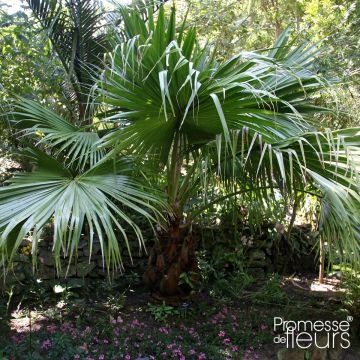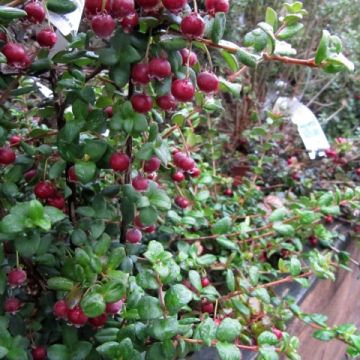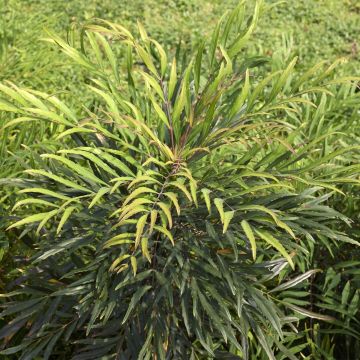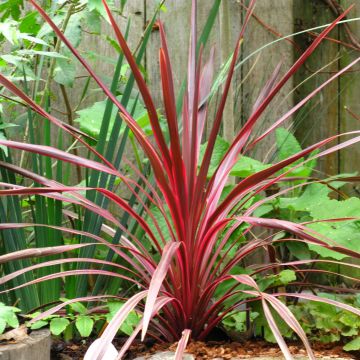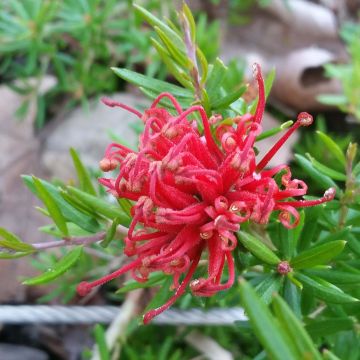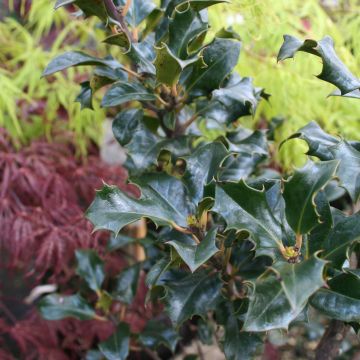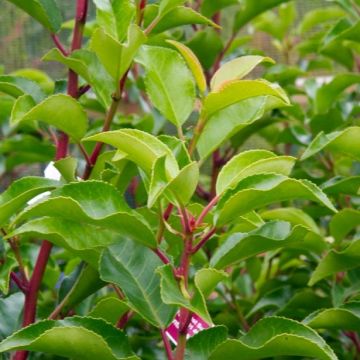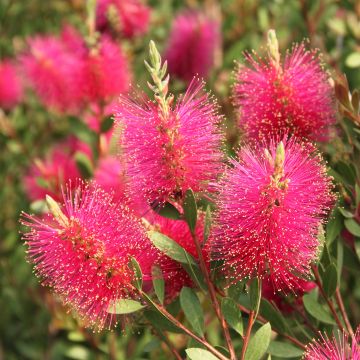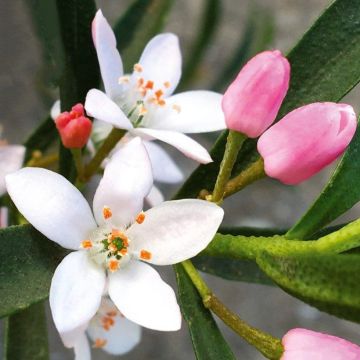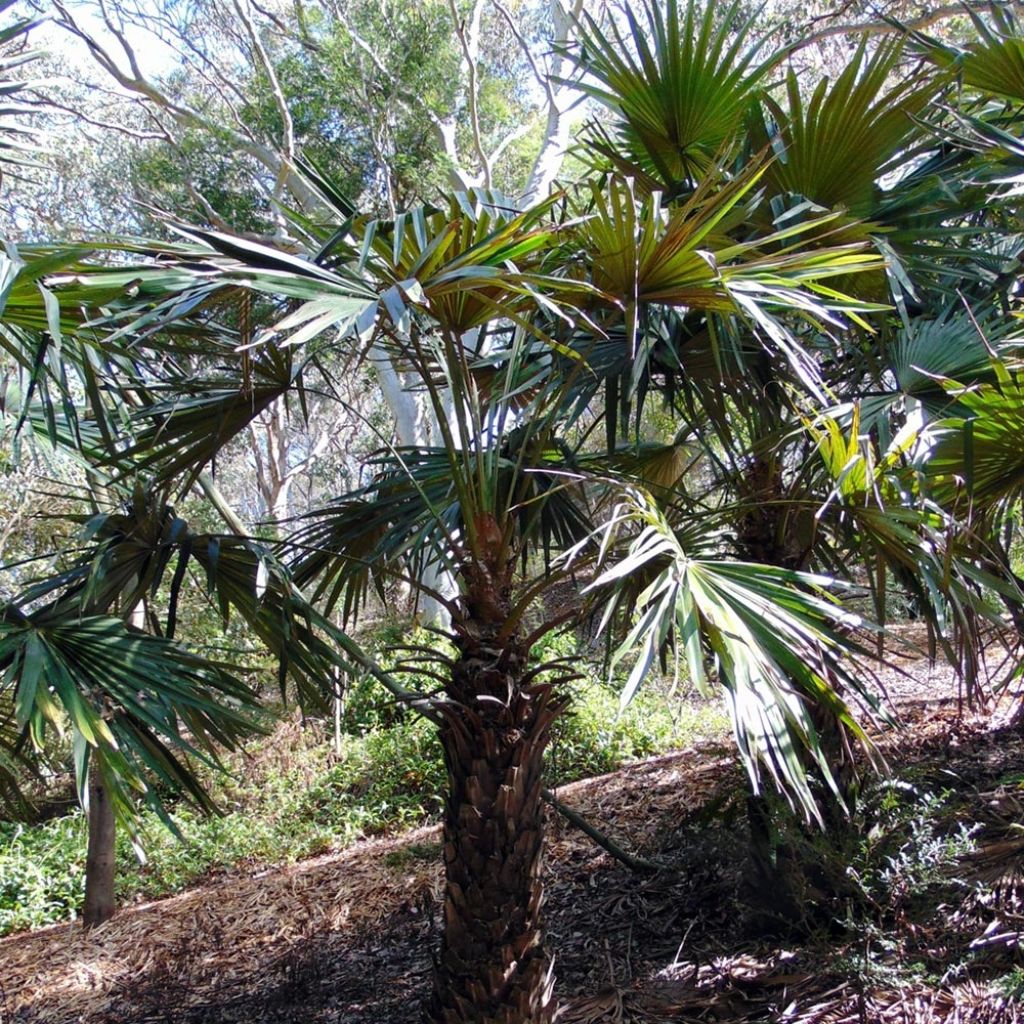

Livistona fulva - Palmier
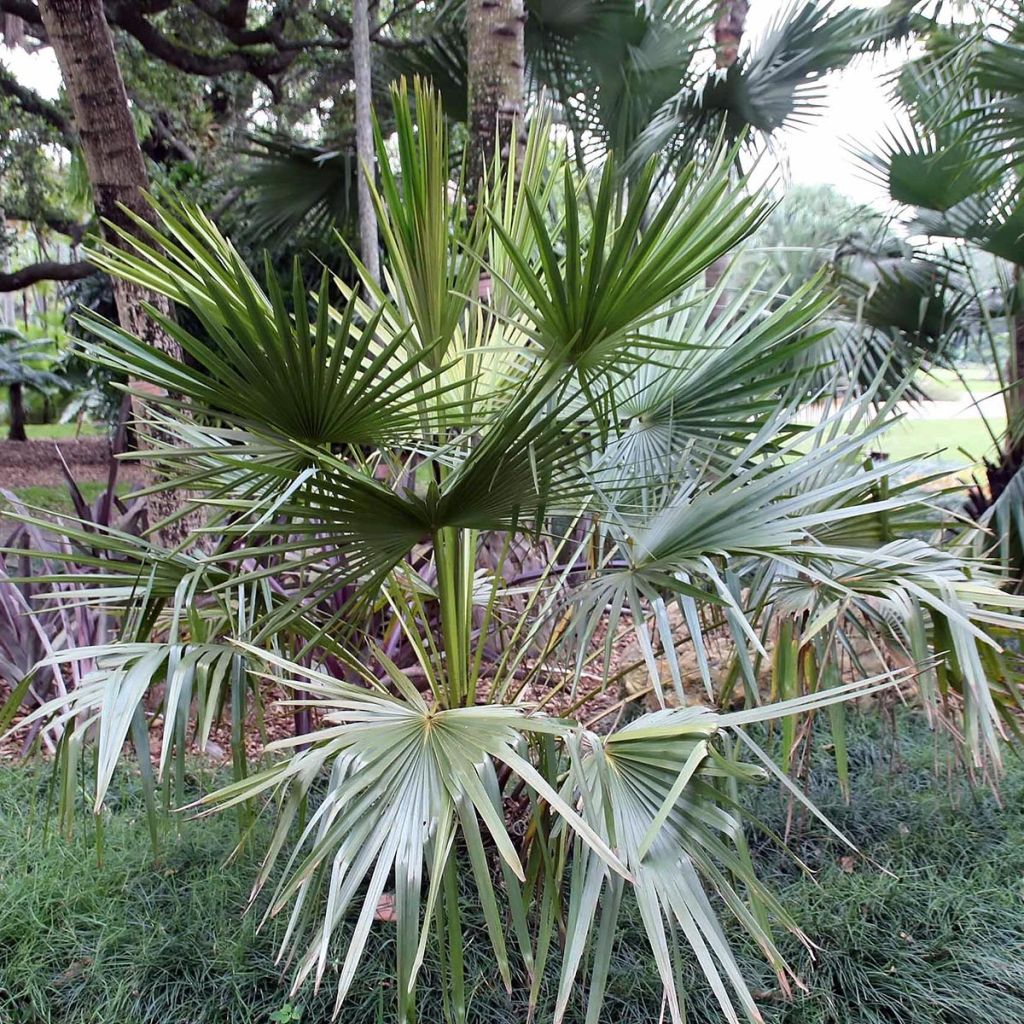

Livistona fulva - Palmier
Livistona fulva - Chinese Fan Palm
Livistona fulva
Chinese fan palm
Special offer!
Receive a €20 voucher for any order over €90 (excluding delivery costs, credit notes, and plastic-free options)!
1- Add your favorite plants to your cart.
2- Once you have reached €90, confirm your order (you can even choose the delivery date!).
3- As soon as your order is shipped, you will receive an email containing your voucher code, valid for 3 months (90 days).
Your voucher is unique and can only be used once, for any order with a minimum value of €20, excluding delivery costs.
Can be combined with other current offers, non-divisible and non-refundable.
Why not try an alternative variety in stock?
View all →This plant carries a 24 months recovery warranty
More information
We guarantee the quality of our plants for a full growing cycle, and will replace at our expense any plant that fails to recover under normal climatic and planting conditions.
Would this plant suit my garden?
Set up your Plantfit profile →
Description
Livistona fulva, sometimes called fan palm or ribbon palm, distinguishes itself from all other representatives of this genus Livistona by its upright habit and its foliage which is remarkably coloured with bronze rust on the reverse. This characteristic has earned it its species name, from the Latin "fulva" which translates as tawny. It develops a slender trunk on which sits an orderly and circular crown of palm leaves, composed of large fan-shaped leaves held upright on stiff petioles. Relatively hardy when mature, this species can be planted in the ground by the sea or further inland, in very sheltered gardens. Elsewhere, it can be grown in a container to protect it from the cold in winter. A magnificent collector's plant!
Livistona fulva is native to Australia, specifically Queensland. It is found in open forests and moist woods, in ravines and gorges, not far from streams and waterfalls, at the foot of cliffs, on rocky and sandy terrain, at an altitude between 400 and 900 m (1312 ft 4 in and 2952 ft 10 in). This species needs warmth and prefers moist soils, but can tolerate moderate drought. Young specimens should be protected from freezing during winter. Its cold resistance, once mature, is around -7, or even -8°C (17.6 °F) for short periods. Like all palm trees, it belongs to the family Arecaceae. In nature, the plant reaches an average height of 13m (42 ft 8 in) with a spread of 6m (19 ft 8 in). In our climates, it will maintain more modest dimensions, around 10m (32 ft 10 in) in height. If cultivated in a container, it will not exceed 3m (9 ft 10 in) in height and 1.50m (4 ft 11 in) in width.
This Livistona has slow growth. It develops a single, grey-brown stem, covered with rings that are leaf scars. At the top of this stem, a generous, round crown develops, composed of 25 to 35 palmate leaves, almost circular and rigid, 90cm (35.4 in) to 1m (3 ft 4 in) long, ending in 60-66 thin, tough, and pointed segments. The colour of the leaves is a greyish green on the top, and the reverse is covered with a furry coating called tomentum, copper-brown in colour. Each leaf is carried by a long, stiff petiole with dark, curved spines at the base. Flowering occurs in summer, in the form of unbranched panicles of cream to yellow flowers. In this dioecious palm, there are male and female individuals.
This palm can be planted in the ground in mild gardens sheltered from the wind. It deserves a prominent place, isolated on a lawn or in front of a large shrubbery that will protect it from the wind. Planted in a large pot or container, it forms a superb green plant that will adorn the terrace or balcony in the summer, and then the veranda and the temperate greenhouse in winter. It is sometimes difficult to associate due to its strong personality: reserve a corner of a swimming pool for it and, for example, associate it with Fargesia bamboo, Phormium, Cordylines, and Hakonechloa macra Aureola, an easy-to-grow ground cover with beautiful orange foliage in autumn.
Report an error about the product description
Livistona fulva - Chinese Fan Palm in pictures
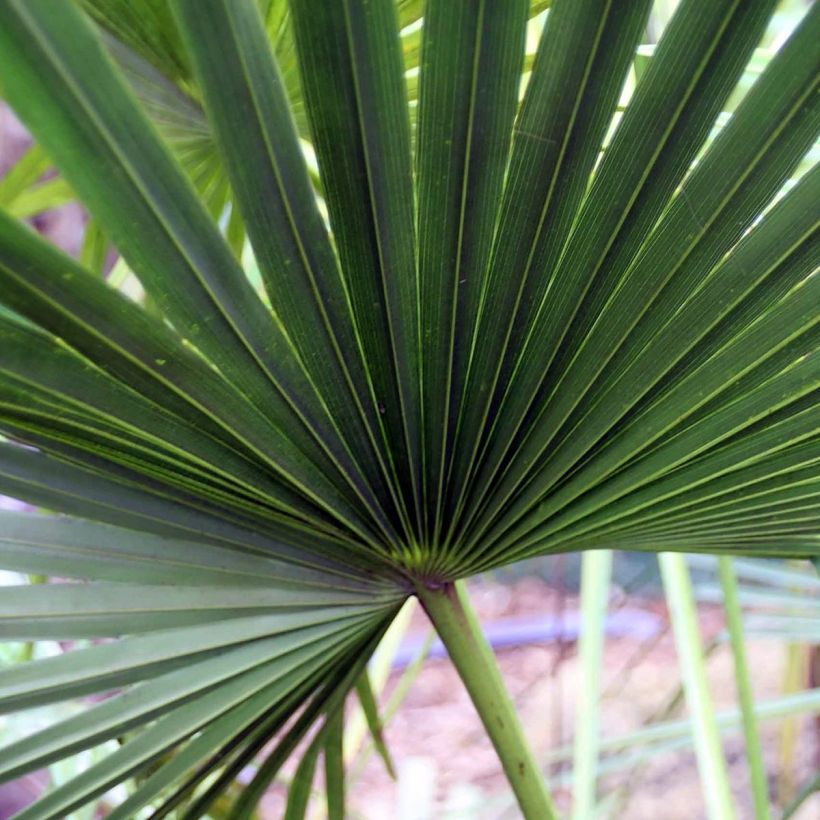

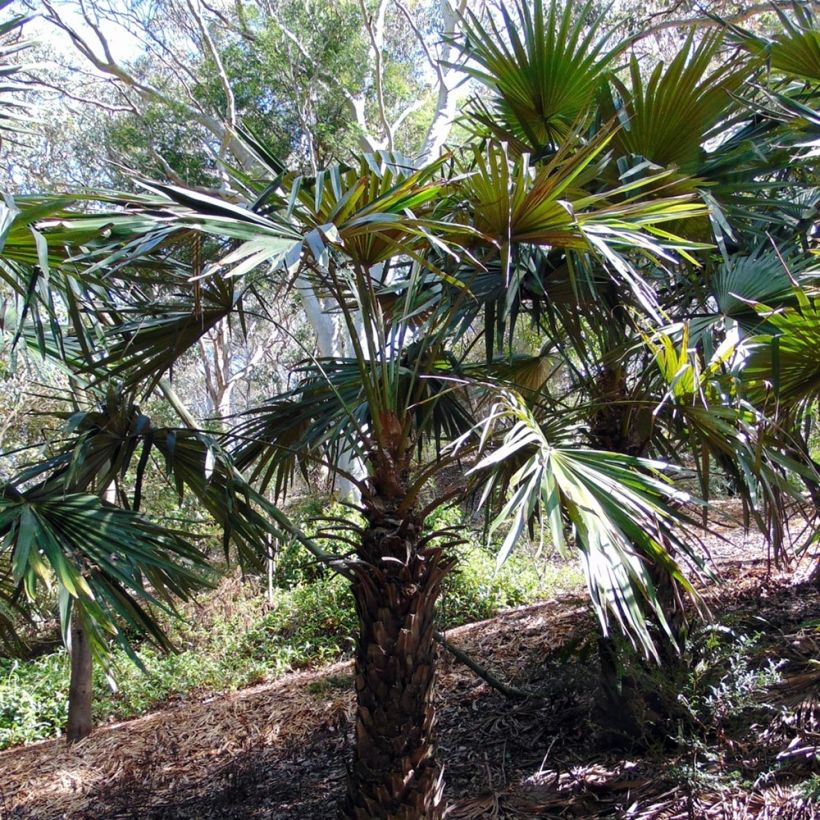

Plant habit
Flowering
Foliage
Botanical data
Livistona
fulva
Arecaceae
Chinese fan palm
Australia
Other Livistona
View all →Planting and care
Livistona fulva dislikes the cold, especially young subjects that will have to be protected from frost in a conservatory or greenhouse. Adult plants can withstand brief freezes of around -7, or even -8°C (17.6 °F). Choose a sunny location sheltered from the wind. It can be grown in the ground in mild gardens, or in a large pot for overwintering in other regions. It should be protected in case of expected cold weather, by tying the crown of leaves tightly enough to protect the plant's heart. Young subjects appreciate partial shade, while older plants tolerate full sun. This palm is not demanding in terms of soil, as long as it is deep, well-prepared and well-loosened. Although it likes moist soil, it can still tolerate periods of moderate drought. Any well-drained soil without excessive limestone will be suitable. In hot areas, it should be deeply watered from time to time during summer. It requires little maintenance except for pruning the oldest leaves close to the stem.
Pot cultivation:
Choose a very large pot or container with drainage holes and a capacity of 75 to 100 litres. Prepare a mixture consisting of 50% loam, 25% compost, and 25% sand. Mix well. Partially fill your container, after placing a drainage layer at the bottom (clay balls, gravel, broken terracotta pots...). Place your palm on the mixture so that the neck (the area where the roots originate) does not exceed the pot but is not buried too deep either. Add the rest of the mixture around the root ball, firmly compact. Water in several steps to saturate the substrate with water and expel air. Place your palm in a very bright location, avoiding harsh sunlight. Outdoors, place it in partial shade, avoiding direct sunlight that could scorch the foliage. After two weeks in partial shade, you can gradually expose it to the sun. In winter, it can be placed in an unheated room, in filtered light, in a temperate greenhouse or conservatory. Spray the foliage from time to time and reduce watering. Apply organic fertilizer or compost in spring.
Diseases and pests:
In some areas, large palm trees are victims of parasites such as the dreaded and widespread Paysandra archon caterpillar, a large butterfly that is also found in England. Specific treatments are now available for preventive purposes. The red palm weevil (Rhynchophorus ferrugineus) has been present since 2006. The symptoms are as follows: cut, dried or yellowing fronds. These pests attack numerous palm species, with a fatal outcome: the leaves dry up irreversibly and completely as soon as the heart of the stem harbours larvae.
Planting period
Intended location
Care
This item has not been reviewed yet - be the first to leave a review about it.
Similar products
Haven't found what you were looking for?
Hardiness is the lowest winter temperature a plant can endure without suffering serious damage or even dying. However, hardiness is affected by location (a sheltered area, such as a patio), protection (winter cover) and soil type (hardiness is improved by well-drained soil).

Photo Sharing Terms & Conditions
In order to encourage gardeners to interact and share their experiences, Promesse de fleurs offers various media enabling content to be uploaded onto its Site - in particular via the ‘Photo sharing’ module.
The User agrees to refrain from:
- Posting any content that is illegal, prejudicial, insulting, racist, inciteful to hatred, revisionist, contrary to public decency, that infringes on privacy or on the privacy rights of third parties, in particular the publicity rights of persons and goods, intellectual property rights, or the right to privacy.
- Submitting content on behalf of a third party;
- Impersonate the identity of a third party and/or publish any personal information about a third party;
In general, the User undertakes to refrain from any unethical behaviour.
All Content (in particular text, comments, files, images, photos, videos, creative works, etc.), which may be subject to property or intellectual property rights, image or other private rights, shall remain the property of the User, subject to the limited rights granted by the terms of the licence granted by Promesse de fleurs as stated below. Users are at liberty to publish or not to publish such Content on the Site, notably via the ‘Photo Sharing’ facility, and accept that this Content shall be made public and freely accessible, notably on the Internet.
Users further acknowledge, undertake to have ,and guarantee that they hold all necessary rights and permissions to publish such material on the Site, in particular with regard to the legislation in force pertaining to any privacy, property, intellectual property, image, or contractual rights, or rights of any other nature. By publishing such Content on the Site, Users acknowledge accepting full liability as publishers of the Content within the meaning of the law, and grant Promesse de fleurs, free of charge, an inclusive, worldwide licence for the said Content for the entire duration of its publication, including all reproduction, representation, up/downloading, displaying, performing, transmission, and storage rights.
Users also grant permission for their name to be linked to the Content and accept that this link may not always be made available.
By engaging in posting material, Users consent to their Content becoming automatically accessible on the Internet, in particular on other sites and/or blogs and/or web pages of the Promesse de fleurs site, including in particular social pages and the Promesse de fleurs catalogue.
Users may secure the removal of entrusted content free of charge by issuing a simple request via our contact form.
The flowering period indicated on our website applies to countries and regions located in USDA zone 8 (France, the United Kingdom, Ireland, the Netherlands, etc.)
It will vary according to where you live:
- In zones 9 to 10 (Italy, Spain, Greece, etc.), flowering will occur about 2 to 4 weeks earlier.
- In zones 6 to 7 (Germany, Poland, Slovenia, and lower mountainous regions), flowering will be delayed by 2 to 3 weeks.
- In zone 5 (Central Europe, Scandinavia), blooming will be delayed by 3 to 5 weeks.
In temperate climates, pruning of spring-flowering shrubs (forsythia, spireas, etc.) should be done just after flowering.
Pruning of summer-flowering shrubs (Indian Lilac, Perovskia, etc.) can be done in winter or spring.
In cold regions as well as with frost-sensitive plants, avoid pruning too early when severe frosts may still occur.
The planting period indicated on our website applies to countries and regions located in USDA zone 8 (France, United Kingdom, Ireland, Netherlands).
It will vary according to where you live:
- In Mediterranean zones (Marseille, Madrid, Milan, etc.), autumn and winter are the best planting periods.
- In continental zones (Strasbourg, Munich, Vienna, etc.), delay planting by 2 to 3 weeks in spring and bring it forward by 2 to 4 weeks in autumn.
- In mountainous regions (the Alps, Pyrenees, Carpathians, etc.), it is best to plant in late spring (May-June) or late summer (August-September).
The harvesting period indicated on our website applies to countries and regions in USDA zone 8 (France, England, Ireland, the Netherlands).
In colder areas (Scandinavia, Poland, Austria...) fruit and vegetable harvests are likely to be delayed by 3-4 weeks.
In warmer areas (Italy, Spain, Greece, etc.), harvesting will probably take place earlier, depending on weather conditions.
The sowing periods indicated on our website apply to countries and regions within USDA Zone 8 (France, UK, Ireland, Netherlands).
In colder areas (Scandinavia, Poland, Austria...), delay any outdoor sowing by 3-4 weeks, or sow under glass.
In warmer climes (Italy, Spain, Greece, etc.), bring outdoor sowing forward by a few weeks.






























